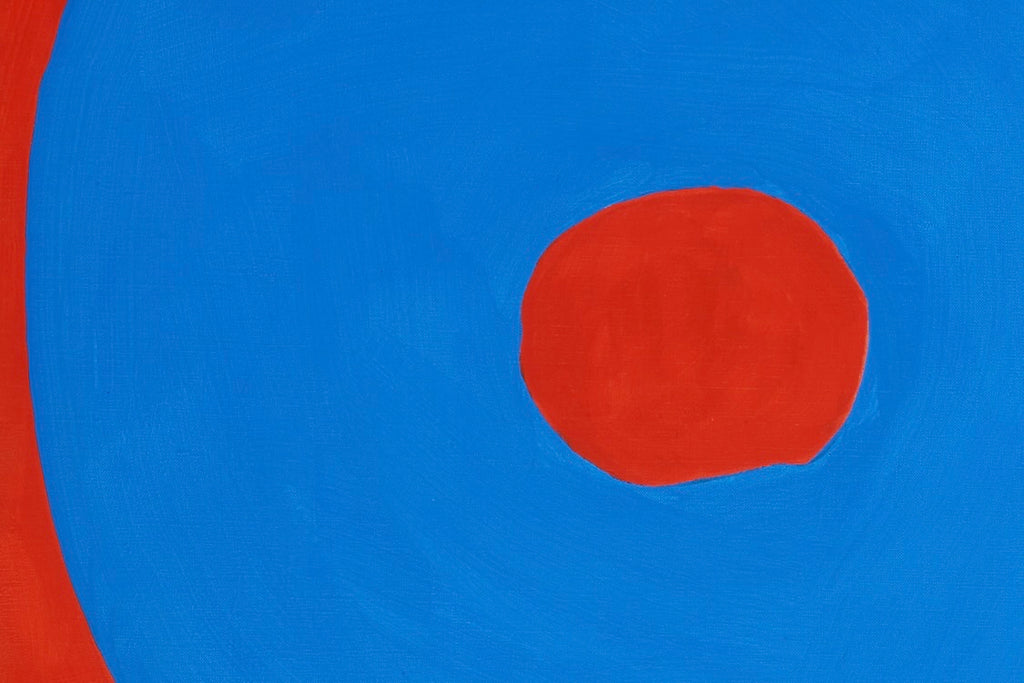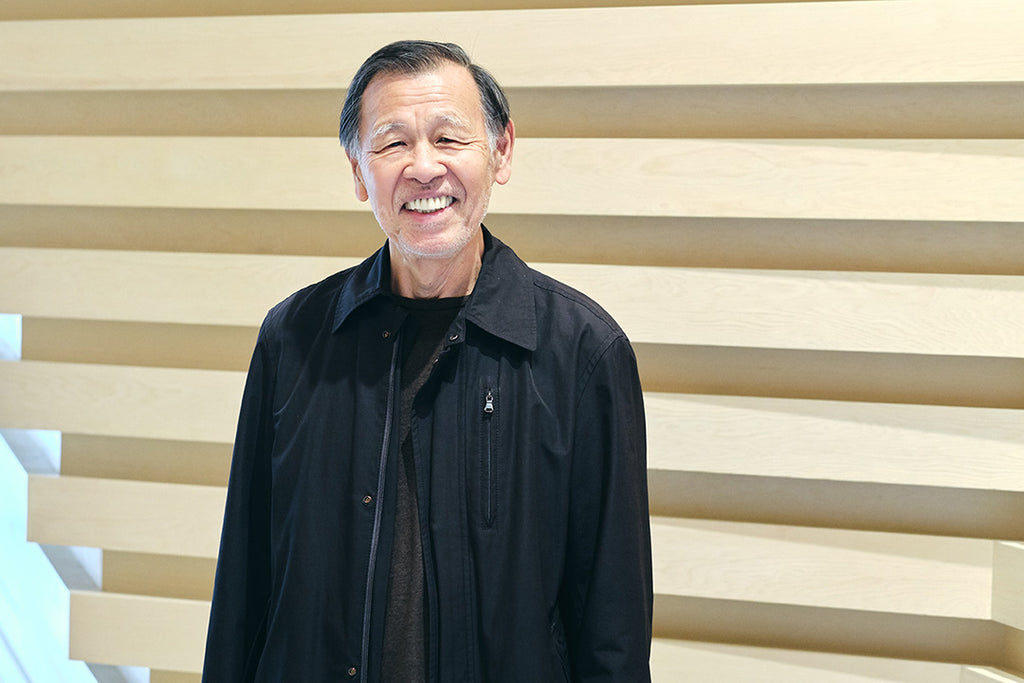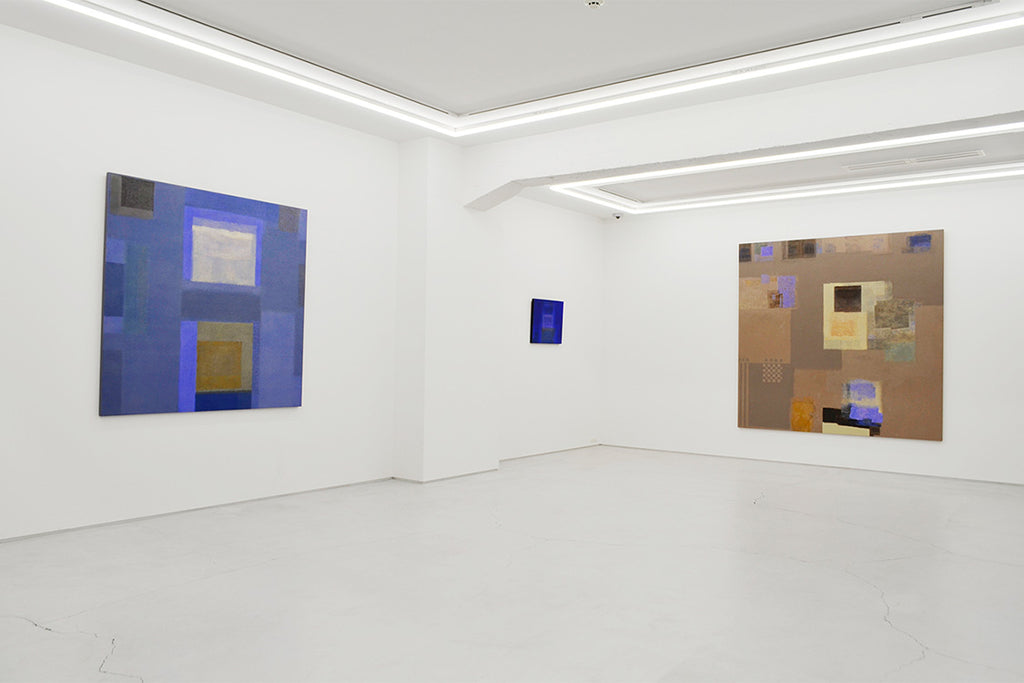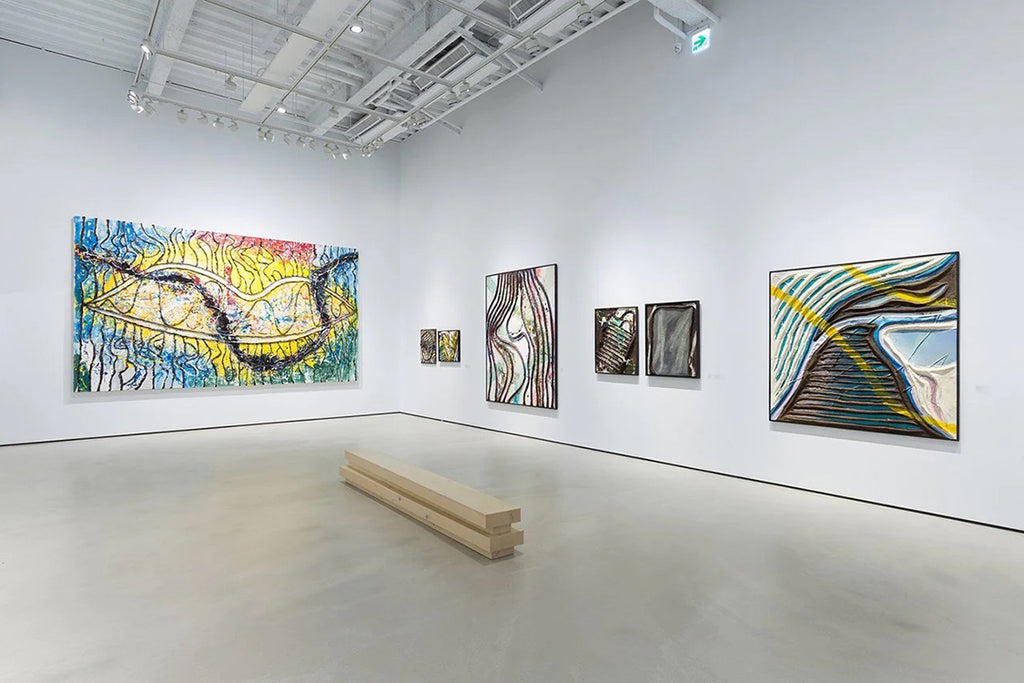ARTICLES
Gutai: Proposal for a New Way to Live
A New Appreciation Contemporary Japanese and Asian Art
19/23

A New Appreciation Contemporary Japanese and Asian Art
In our ongoing series, we present the digital archive of the book 'A New Appreciation Contemporary Japanese and Asian Art' This book delves into internationally acclaimed artists and the dynamics of the Asian art market. The nineteenth installment features artist Shuji Mukai and art critic Kunio Motoe.
Gutai: Proposal for a New Way to Live|Interviews of Experts in the Art Industry
Shuji Mukai
Artist
Kunio Motoe
Professor Emeritus, Tama Art University, Art Critic
Shuji Mukai was among the second generation of Gutai artists, along with Takesada Matsutani and Tsuyoshi Maekawa. He is well-known in Japan and abroad for his room-filling installations made up of unintelligible symbols. In 1998, his installation featured in the opening of the remodeled Louis Vuitton store in Soho, Manhattan and his 2013 performance at the Guggenheim Museum in New York gained much attention. What does ‘Gutai’ mean for Mukai who remained a member of the Gutai Association until its dissolution?

Mukai in front of his installation of a room covered in unintelligible symbols.
Entering a Painting
Motoe: I’ve recently been thinking about how truly remarkable the Gutai artists have been.
Mukai: Jiro Yoshihara, founder of the Gutai Art Association, gave us the idea of being unbeholden to shape and he created this kind of free atmosphere. Anyone who couldn’t go along with that left, and the members who stayed were, as you point out, special and diverse. Specifically, we can think of the key members Shozo Shimamoto and others from the Modern Art Association, and Atsuko Tanaka, Saburo Murakami, Akira Kanayama, and Kazuo Shiraga who came following the dissolution of Zero-kai group. They added intelligence and elevated the
Motoe: I see. Did those who quit disagree with aesthetic concept?
Mukai: Maybe they wanted to have more personal freedom. Yoshihara was particular about smell and being clean and such things. He insisted that the artists wear neckties and have good manners like that even for our own gatherings. He was that kind of person. A bit fussy.
Motoe: Really? I hadn’t heard that before.
Mukai: The Gutai Pinacotheca museum, named by Michel Tapié, was located in the Yoshihara family storehouse dating from the Edo period. He came from a privileged family and when things didn’t go well with the Nika-kai association, he could do whatever he wanted.
Gutai members would bring their works to Yoshihara’s residence in Ashiya. The ones that passed inspection would be kept there for something like an opening party around twice a year. In eighteen years though, there was only one time that all the members gathered for a meal together. It wasn’t a place we could get together to talk about art theory and such because that was not related to management (membership fees were cheap, thanks to Yoshihara’s cooking oil family business). Since more money was needed than Yoshihara expected, and more members were recruited. As members increased, and sculpture was accepted… many things changed….
Motoe: Did you identify as a Gutai Association member? Or perhaps you did not think of yourself as belonging?
Mukai: With Tapié’s promotion overseas, Gutai became more recognized. We were in the shadow of something powerful. Tapié was an art producer and held successful exhibitions of our work around the world, with famous artists such as Jasper Johns and others taking an interest in our Gutai Pinacotheca.1 People in Japan would recognize us if we had a good reputation abroad.
Motoe: I saw reporting on the Tokyo exhibition, in the Yomiuri Shimbun I think that seemed to be making fun of Shiraga.
Mukai: Yes, we were ridiculed here.
Motoe: Gutai has a very important position in post-war Japanese art. The overseas reaction also ignited the market. How did you get involved with the Gutai Association?
Mukai: I learned about it from Kazuo Shiraga. At the exhibition in Kyoto in 1959 I saw eight of his very large paintings and wondered what kind of person he could be. He is usually identified as the artist who paints with his feet, but for me it was more that he had physically entered the paintings. He rejected the traditional culture until then of facing a painting. He also rejected paint and brush, used sand. For my own Symbol Room, I tried to emulate Shiraga, using the room as frame and myself penetrated the room as a symbol.
Kanayama’s Remote-Controlled Painting Machine was also influenced by Shiraga’s idea. He asked me at what point to stop to complete the automatic painting. I enjoyed and was much influenced by these methods.
Motoe: It is rare that an artist would so clearly identify influences. Is that because you are confident?
Mukai: Do you mean that I am special? (laughs)
Motoe: You surprise me! (laughs)
Mukai: I know people, and people and the works they produce are not related.
Motoe: That’s right. But I thought there would be a more striking reason.
Mukai: Striking? What do you mean?
Motoe: Well, maybe something about rivalries, or overflowing emotions, or determination and discipline.
Mukai: Everyone worked hard. There were no secrets or rumors, and no meanness. When I was in my 20s, Tapié would buy my paintings whenever he came to Japan. He included me, with Domoto Insho, Sofu Teshigahara, and Jiro Yoshihara, in the Repetitive Structure exhibition he organized at the Galerie Stadler in Paris. They must not have been too happy about it. For Tapié, more than trying to sell at high prices, it was rather for his reputation in the gallery business.
Motoe: Did Tapié pay cash for the paintings?
Mukai: It varied. For Fontana, he would barter with the Japanese galleries.
In any case, to promote Gutai it would be necessary to use philosophical words, but this went against the Gutai philosophy. The Gutai artists were indifferent and I think that was a good thing. If the viewer thinks it is good and feels good seeing a painting, that’s fine. Once someone starts to give explanations about an abstract painting, it loses its attraction.

Mukai’s installation for a Symbol covered bathroom Louis Vuitton shop
Jiro Yoshihara and the Foundation of Gutai
Motoe: What is your concept of Gutai?
Mukai: No rules. Do whatever you want. Rejecting all existing concepts of art.
Motoe: Isn’t that Dada?
Mukai: Gutai has none of the ideological background of Dada. The biggest disadvantage was that the paintings sold. At the time, it was a hassle to go to the bathroom that was far away, so I would just pee on the painting I was doing.
Motoe: That’s a famous story.
Mukai: It was a case of ‘anything goes.’ After that, I took a break. (laughs)
When I didn’t have enough pieces for an exhibition, I would draw whatever I had – a bookcase, chairs; I would even remove the screens and paint those.
It was interesting that this kind of free flow is what Gutai was about but it was ironic to see that anything displayed in a frame would be considered a painting, thanks to Tapié’s promotion. In the United States, Gutai is considered a ‘social movement’ but I don’t think there was any such social background to it.
Motoe: Really? Not at all? How about World War II?
Mukai: Everyone wants to find a connection. (laughs) But there is none. It is not necessary for creating art. I won’t say that we were completely detached but the extent of our freedom was a bit different. Assuming that there was a production concept, it might be something like a treasure a child cherishes and then puts aside over time. We were bewildered by suddenly taking on something outside of art conventions.
In the early stages, before Pinacotheca, everyone talked about technique and that was the most interesting time. It is difficult for one person to declare something as art or as a painting. It would become ‘expression’ when it involves several people. Saburo Murakami’s bursting through paper performances actually date to the Edo Period. Sadamasa Motonaga’s nagashi technique comes from the world of traditional textile dyeing. Shiraga’s mud performance can be seen in traditional festivals.
Motoe: It might be an exaggeration, but do you mean that Gutai had no concept or ideology?
Mukai: It was what was the idea and sensibility of Jiro Yoshihara.
Motoe: Sensibility? Was that an absolute standard?
Mukai: It was his philosophy and sensibility…. Everything was filtered through his ideas. It was more like a design company supervisor, accepting or rejecting things, without any particular guidelines. Only Shiraga had permission to choose a title. On the other hand, he would say ‘Absolutely use words that no one will understand.’ It was ambiguous. It started out with a sense of playfulness and no Gutai members were speaking rationally. There was also nothing in writing from Yoshihara.
Motoe: There was the Gutai Manifesto published in the journal Geijutsu Shincho.
Mukai: I especially like the phrase – ‘Let’s reject tokonoma art.’
There are more researchers overseas than in Japan. Although there is much analysis of Yoshihara’s works, there is a lack of research on his concepts.
Goro Yoshida photographed Gutai activities, but he died early and the unfortunately the chronicle was not continued. I am wondering how to manage with computer graphics….
Motoe: You stayed as a Gutai member until the end, until it dissolved.
Mukai: Right. However, towards the end I followed Yoshihara’s orders to work to ‘expand the limits of art.’ Jazz Café Check was at around that time. Tapié was surprised. The base for the installation is still in place. When Tapié took Gutai art overseas, because of transportation constraints, it was mostly two dimensional works. Motonaga’s water and Shiraga’s mud paintings. These were not so well received. There is an art photo of it.
Motoe: From another point of view, Gutai is recognized today because of those flat paintings were preserved.
Mukai: That’s right. Maybe because Jiro Yoshihara who had commercial sense was in charge of management. Now with the internet, something is old as soon as it is completed. I want to emphasize that Gutai has to deal with how to use the net, how to keep up with computer graphics and new visual expressions.
Motoe: Is Gutai obsolete? Has it run its course?
Mukai: I do not think so. Everything continues. The Gutai artists who have died will, of course, not produce anything more. Many things have been tried, but there are many more possibilities for expression. For the surviving artists, we would not like to think that there are no new possibilities for Gutai.
Motoe: Each member has their own version of Gutai.
Mukai: That’s right. You can ask each on about their concept, but it is too early to answer. I think Akira Kanayaa and I basically agree on this.
Motoe: What are you aiming for now?
Mukai: A mirror. I am interested in doing something that allows viewers to see themselves. Something with viewer participation using a curved mirror for a new experience of ‘seeing.’ For me, Gutai has been a proposal for a new way of life. More than a newspaper’s cultural section, it is the society section these days that is in real time. Gutai would have been regarded as a social experiment. One might question if the Gutai movement was art or not, but I’m sure it expanded the limits of art.
Motoe: That is Gutai. A deep insight. Thank you very much for this interesting discussion.
(Detailed artist profiles can be found in the biography section at the end of this book.)
Book Information
Title: A New Appreciation Contemporary Japanese and Asian Art (English Edition)
Publisher : Whitestone Co., Ltd.
Release Date : February 26, 2020
*Information in this article is at the time of publication.
1Jiro Yoshihara renovated the storehouse of his family home in Nakanoshima, Osaka to build a museum. French art critic Michel Tapié gave the Museum its name. It became the Gutai base presenting Gutai group exhibitions and solo exhibitions of many artists from Japan and overseas. The Museum closed in 1970 and the building has been destroyed.



